Range Rover Velar Review
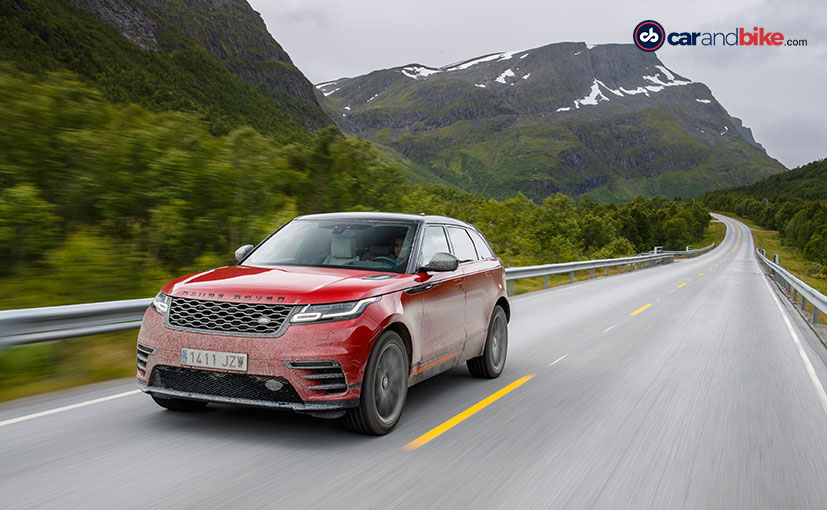
Highlights
- The Range Rover Velar is the most road-biased car from Land Rover yet
- The Velar name is derived from the first prototype Range Rover from 1969
- The Velar's design follows the Range Rover theme of being yacht-inspired
I'm in Norway to drive the newest from the JLR stable - the Range Rover Velar. A new car in a new country - exciting for sure - but I was especially enthused because it's the quickest we have gone from hearing of anew model and actually driving it. The Velar has been conceived as a new Range Rover model that will fill the chasm between the smallest Evoque and the larger Sport, to make it a four member family. When I first saw the car this April in New York, I argued whether that gap really needed to be filled to be honest. After all in price point terms the Velar would also drive in close to the new generation Discovery. Having spent two days with it, I can now say I not only understand how it fits into the family, but also appreciate why Land Rover needed to make it. And yes to explain it to you in simpler terms - just like you have the Evoque and Discovery Sport - very different cars for very different buyers, yet at similar price points, so too will the Discovery and Velar coexist.
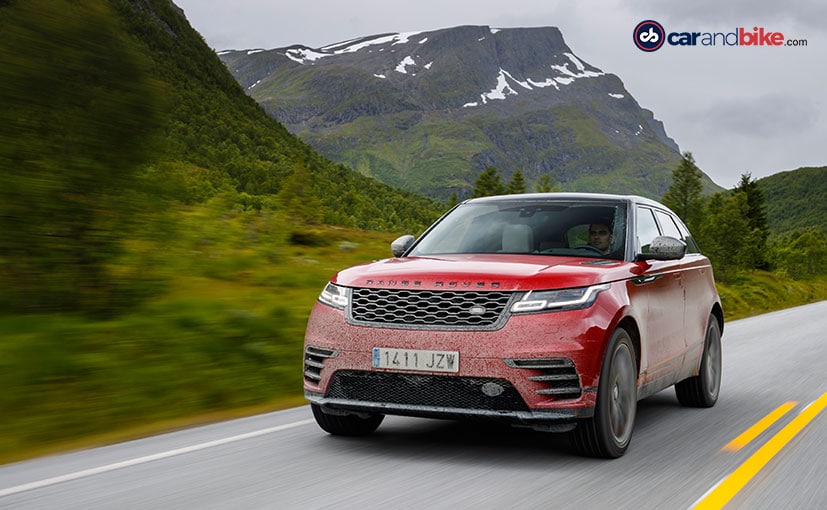
The Velar name is derived from the first prototype of the first Range Rover from 1969
So why is it named Velar? The name goes back to the first prototype of the first Range Rover in 1969. But the real question then is - why was that proto named Velar? For one, the badge could be made using existing letters from the Land Rover badge (before you ask - the 'A' is an inverted 'V')! And the name worked because it was Latin for 'to cover' or keep something under wraps! Plus the company was making a transition from a largely soft or open top Defender to the hard top Range Rover! So now that you also have that history lesson, I think you too can appreciate the name even more! And so bringing that name back to life is actually rather special then. Like all Range Rovers, this is a premium car, with superior looks, great finish, a long equipment list and Land Rover's legendary capability.
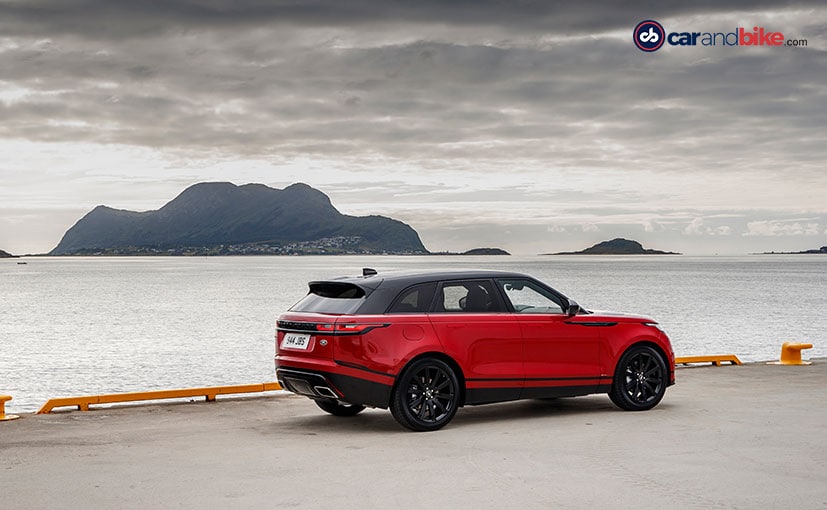
Range Rover Velar is the most road-biased car from Land Rover yet
Yet this is the most road-biased car from Land Rover yet. That said, this car would still do what you would need off road. It has a 650mm wading depth, standard 4 wheel drive, terrain response, and with the optional air suspension - 251 mm of ground clearance. Normally a rear-biased car, the Velar has a chain drive to transfer torque to the front when needed.
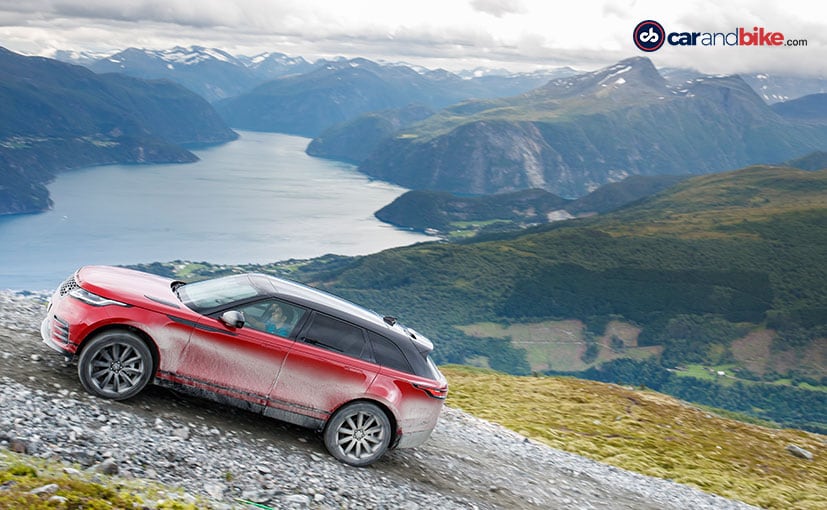
Range Rover Velar comes with a 251 mm ground clearance
The Velar's design follows the Range Rover theme of being yacht-inspired. And yet things are not as big and straight as you see on the other Rangeys. It is also sleek and not bulky in any way, and comes across as immediately high-end yet sporty. And its sleek lines will captivate you, as will the very unique new day time running lights and the gorgeous taillights. Depending on the version you buy there are some highlight elements around the car that are finished in either gloss black, metal or a new copper finish. When you unlock the car, you notice the deployable door handles. Yes - an SUV with those is new, and it's not just a party trick for the sake of it. While it adds to the style quotient, given it's a Land Rover, it isn't a delicate handle. The whole thing comes out nice and chunky, and you can pull it out with a nice shove - pretty cool.
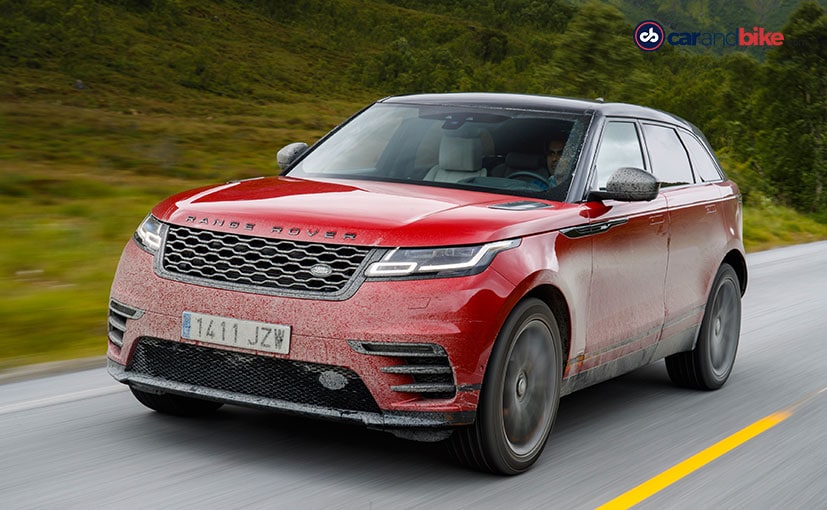
Range Rover Velar's design is inspired from a yacht
The interior of the car is also yacht inspired, and when you see it you will suddenly become aware how it brings in a whole new standard in to the Land Rover family. The Range Rover - once the bar for sophisticated, modern and very premium interiors will seem dated and dare I say clunky by comparison. The Velar's cabin is rather simple and extremely classy. The focus has been to reduce the clutter and allow the interior to have a bespoke feel - rather a similar philosophy to what Volvo has begun doing off late. Land Rover prefers that you do not use the word minimalist but that's what comes to mind because the cabin is just that.
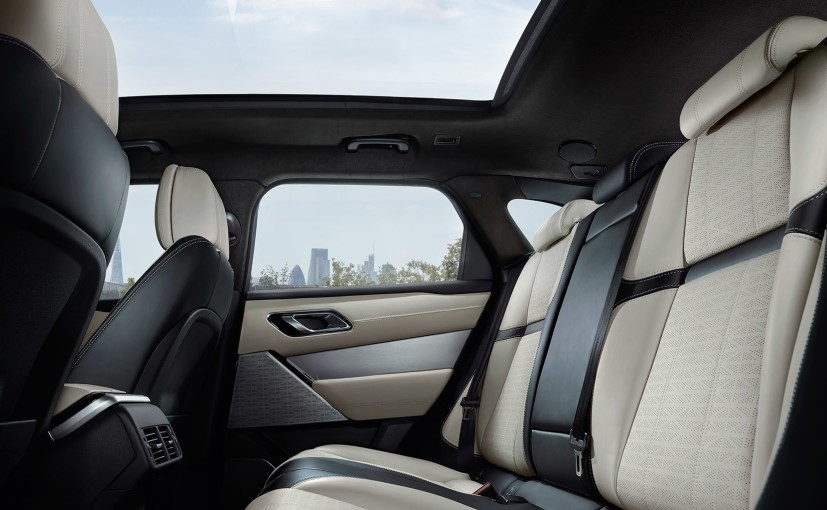
Range Rover Velar gets a smart and intuitive cabin
The car is packed to the gills with all sorts of features and comforts that you would expect from a premium SUV, so am not going to bore you with that. The only things you will miss are Apple CarPlay and Android Auto - JLR really needs to sign some contracts there! But the real USP of this interior is the touchscreen interface across the cabin. The instrument cluster is also virtual, and you get a detailed and colour rich head-up display now too. But back to what LR calls Touch Pro Duo - two screens in the central console that house all operations and systems. The one on top also tilts to provide you the best field of view, and has pinch-zoom touch capability.
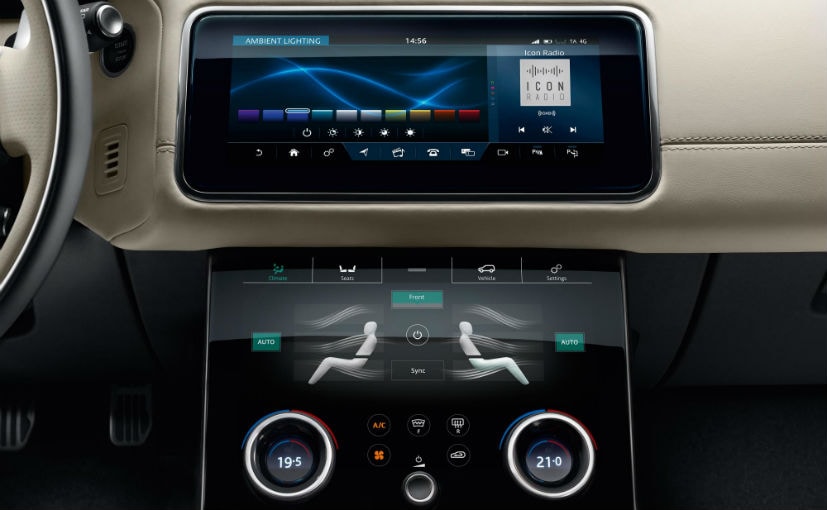
(The two screens in the central console- that JLR calls Touch Pro Duo- houses all operations and systems)
You can have the navigation on the top screen and customise other functions on the one below for instance. The lower screen will allow you to manipulate climate control, seats/massage, vehicle settings, drive modes or even terrain response - complete with very cool displays for each of those that use a combination of pneumonics and real imagery. And what's really cool is how two dials have been integrated within the lower screen - almost floating over it - and they too have an embedded display function screen within them. Panasonic's Magic Dial technology - first seen at the CES in 2016 - has been put to great use.
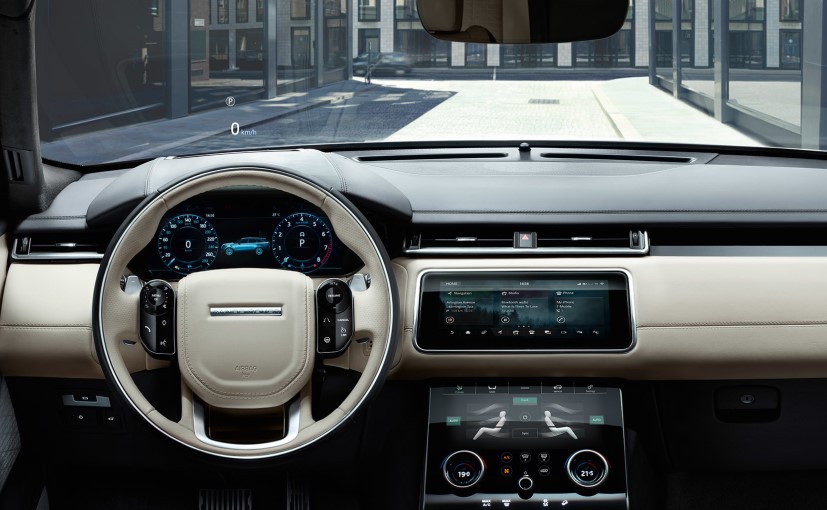
Range Rover Velar gets an all digital dashboard
The focus of this new tech is to move to a button-less future. I got a slight sense of how the lower dash plastics could be a tad better, and while I can't put my finger on it - there is a very slight sense of costs being shaved to accommodate all of this technological trickery. But don't get me wrong, the sunken recessed AC vents, the clean lines, leather and all those glossy flat surfaces, are very sexy indeed.
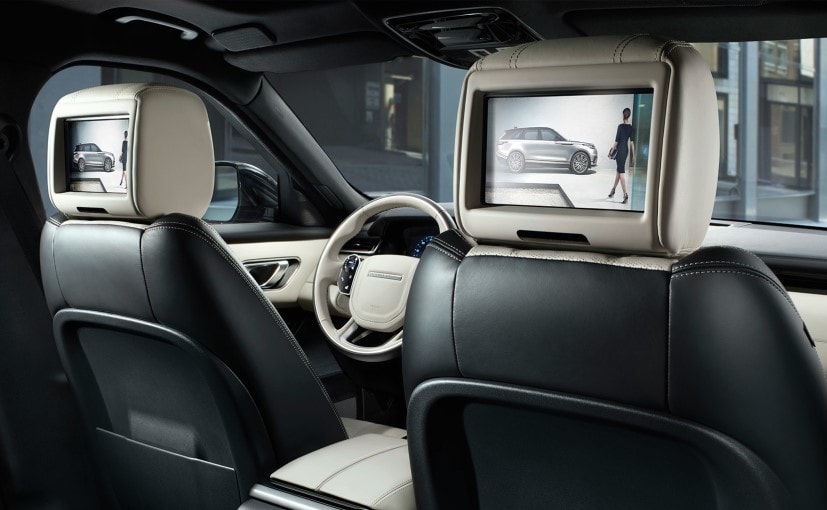
Range Rover Velar focuses on button-less tech
The Velar comes with 6 diesel and petrol engines that meet Euro 6 emissions requirements. The span includes the 4 cylinder 2 litre Ingeniums (petrol and diesel) and also the larger six cylinders (again both fuel types), taking the range from 180 to 380 horses. All-wheel drive capability and an 8-speed automatic gearbox are standard, and yes that includes the paddle shifters. The good news is we are getting 3 engines for India - the 2 litre petrol/diesel and the 3 litre diesel range topper. The 3 litre TD V6 is a beast! I know this engine well and in the Velar it comes across as refined and powerful. It makes 296 horses and puts out a yummy 700 Nm of peak torque that kicks in as low as 1500 rpm. The smaller diesel also gets pretty good numbers. I have tested that engine on other cars in the portfolio and have to say it is quite the surprising pick of the pack for me. Very refined and surprisingly quick too.
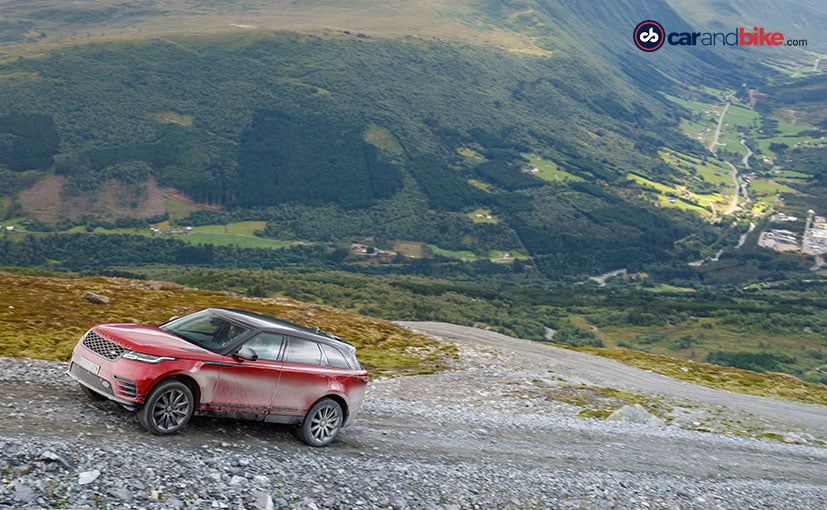
Range Rover Velar also come with the 2-litre Ingenium petrol and diesel engines
I did get the chance to drive the P380 or range topping petrol V6, though India will get the P250 Ingenium, and so let me tell you about its specs instead. I have driven a similar iteration of that very engine on other Land Rovers and have come away liking its eager nature. The 2 litre 246 bhp engine will give you good response and I reckon it will do well on the Velar too. Sound insulation is something that seems to just get better and better with each new model from possibly every manufacture now. On the Velar you really get a sense of that and it's a good thing as the smooth quiet ride will up the luxury quotient. The one grouse I have is that there is not nearly enough feedback to the steering, especially on rough rods. While I understand this has been done to promote a more refined feel, it is disconcerting. And while the steering can be adjusted for reach and rake, I found its telescopic reach is rather limited.
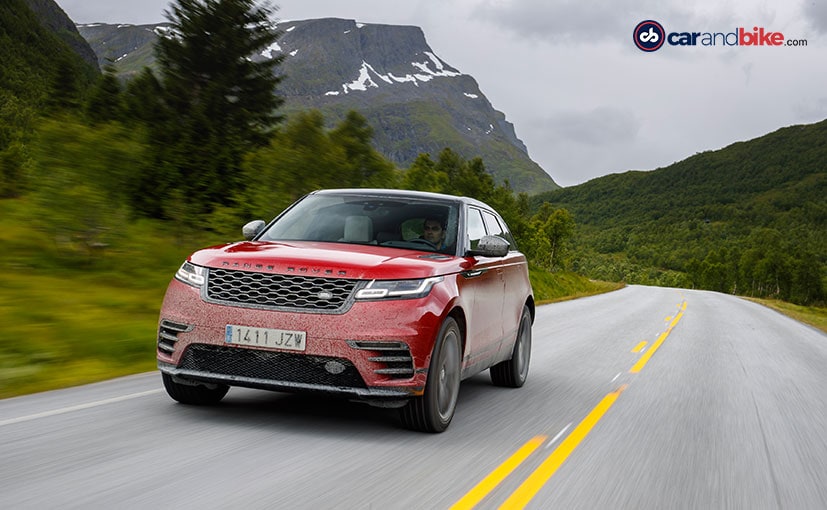
Range Rover Velar gets 6 diesel and petrol engine options
It's not just because it's a latest product of the JLR family but it's also because it's a Range Rover that it's really the epitome of everything that the brand represents in terms of technology, style, design and materials and which is why you get an array of things in Velar that will really surprise you. All-Terrain Progress Control is a good feature to negotiate climbs or descents, but otherwise LR continues to stay away from the more mainstream autonomous features other are beginning to offer. Being the most road-focussed Land Rover yet, the Velar's 81% aluminium body adds the stiffness you need to be able to provide the right dynamics on tarmac. The car's air suspension is standard on V6 models and optional on 4 cylinders, and will strike you as the biggest difference between this car and the Jaguar F Pace - which is similar in size and price terms - and with which it shares its platform. And so like the Jaguars on this platform, the Velar also gets double wishbones at the front and an integral link set-up at the rear. Now this is in fact like a multi-link but it also gets some lateral rigidity enhancing components.
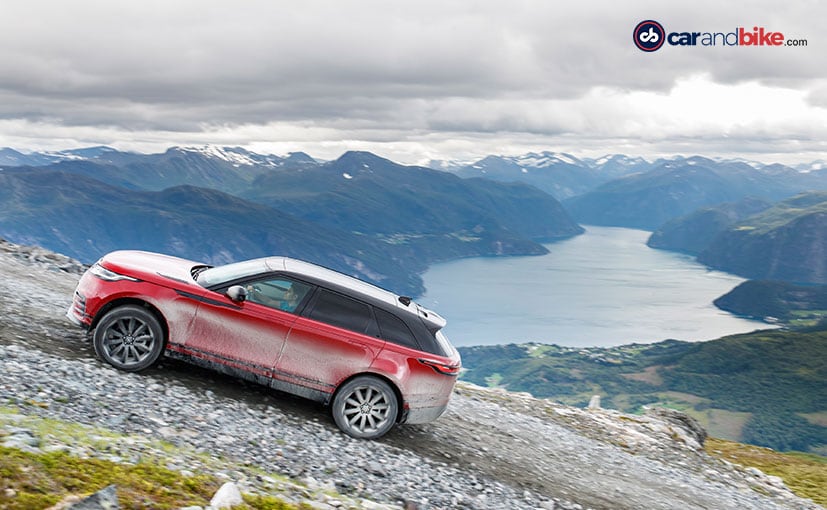
Range Rover Velar gets the All-Terrain Progress Control system
Norway is blessed with its abundant natural wealth - the fjords, mountains and overall beauty of the place has to be seen to be believed - truly stunning and spectacular! Being in this Scandinavian paradise also meant I had the chance to drive the car on smooth highways, across many bridges and through some very long tunnels. And how can I forget the ferry crossings - quite the norm here in Norway it would seem, though quite exotic for people like me! The Velar takes it all in its stride with ease, though I have to say the P380 petrol doesn't quite come across as the powerful V6 it is. The Range Rover Velar will come to India this very year with a price announcement and start of bookings on September 21, 2017. The market launch will follow a few weeks later. The Velar is expected at prices ranging between Rs. 75 lakh and Rs. 1 crore.
Last Updated on August 26, 2017
Related Articles
Latest Reviews
Research More on Land Rover Range Rover Velar
Popular Land Rover Models
 Land Rover DefenderEx-Showroom Price₹ 1.05 - 2.79 Crore
Land Rover DefenderEx-Showroom Price₹ 1.05 - 2.79 Crore Land Rover Range RoverEx-Showroom Price₹ 2.4 - 5 Crore
Land Rover Range RoverEx-Showroom Price₹ 2.4 - 5 Crore Land Rover Range Rover VelarEx-Showroom Price₹ 87.9 Lakh
Land Rover Range Rover VelarEx-Showroom Price₹ 87.9 Lakh Land Rover Range Rover SportEx-Showroom Price₹ 1.45 - 2.95 Crore
Land Rover Range Rover SportEx-Showroom Price₹ 1.45 - 2.95 Crore Land Rover Range Rover EvoqueEx-Showroom Price₹ 69.5 Lakh
Land Rover Range Rover EvoqueEx-Showroom Price₹ 69.5 Lakh Land Rover Discovery SportEx-Showroom Price₹ 67.9 Lakh
Land Rover Discovery SportEx-Showroom Price₹ 67.9 Lakh Land Rover DiscoveryEx-Showroom Price₹ 1.34 - 1.47 Crore
Land Rover DiscoveryEx-Showroom Price₹ 1.34 - 1.47 Crore
- Home
- Reviews
- Car Reviews
- Range Rover Velar Review















